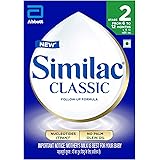What is PHP?
The acronym PHP initially stood for Personal Home Page.
As of version 3, it stands for PHP Hypertext Preprocessor. It is a general purpose server side scripting language that is used to develop:
- Dynamic Websites
- Custom Web Portal (Like ERP, CRM)
- Web Applications
- E-commerce Websites (Like Flipkart, Amazon, Paytm, Snapdeal etc)
- CMS – Content Management System
Importance of PHP?
- It costs low with cost effective database applications
- It is platform independent
- PHP supports all major web servers
- The existence of multiple security layers make PHP one of the most secure options for developing the most critical websites and web applications.
- PHP supports a wide array of databases including dataBase, MySQL etc.
History of PHP
- Designed by Rasmus Lerdorf
- Developer The PHP Development Team, Zend Technologies
- First appeared June 8, 1995; 21 years ago
- Stable release 7.1.0/ December 1, 2016
Basic Structure of PHP
<?php //your code here ?>Example:
<!doctype html> <html> <head><title>Hello World Script</title></head> <body> <?php echo "<p>Hello World!</p>"; ?> </body> </html>Printing statement in PHP
If you want to print/echo some string/variable or number in php
<?php $variable = "your string"; // echo $variable; // ?>File Extension of PHP
PHP files have the file extension .phpComment Line in PHP
- Single Line Comments
Single line comments start with //.
Any text between // and the end of the line will be ignored by PHP(will not be executed).
Example
echo 'This is a test'; // This is a one-line c++ style comment
- Multi-line Comments
Multi-line comments start with /* and end with */.
Any text between /* and */ will be ignored by PHP.
Example
/* This is a multi line comment yet another line of comment */ /* echo 'This is yet another test'; echo 'Hi'; */ echo 'One Final Test'; # This is a one-line shell-style commentVariable Declaration
In PHP, a variable starts with the $ sign, followed by the name of the variable:
Example
<?php $Vraiable_name = "Hello world!"; $x = 5; $y = 10.5; ?>A variable can have a short name (like x and y) or a more descriptive name (age, car name, total_volume).
Rules for PHP variables:
- A variable starts with the $ sign, followed by the name of the variable
- A variable name must start with a letter or the underscore character
- A variable name cannot start with a number
- A variable name can only contain alpha-numeric characters and underscores (A-z, 0-9, and _ )
- Variable names are case-sensitive ($age and $AGE are two different variables)
R for Rabbit XL Size Premium Feather Diaper for Baby 12 to 17 kgs (46 Pack Offer)
₹611.00 (as of December 21, 2025 20:13 GMT +05:30 - More infoProduct prices and availability are accurate as of the date/time indicated and are subject to change. Any price and availability information displayed on [relevant Amazon Site(s), as applicable] at the time of purchase will apply to the purchase of this product.)Opullent baby carrier for 0 to 3 year Polyester, Front Carrying Position with Padded Straps Comfort Design Newborn Kids Adjustable Hands-Free 4-In-1 Comfortable Head Support & Buckle For 0-18 Months Baby (Navy Blue-Pack Of One)
₹299.00 (as of December 21, 2025 20:13 GMT +05:30 - More infoProduct prices and availability are accurate as of the date/time indicated and are subject to change. Any price and availability information displayed on [relevant Amazon Site(s), as applicable] at the time of purchase will apply to the purchase of this product.)Pampers Active Baby Tape Style Baby Diapers, Newborn/Extra Small (NB/XS) Size, 72 Count, Adjustable Fit with 5 star skin protection, Up to 5kg Diapers
₹941.00 (as of December 21, 2025 20:13 GMT +05:30 - More infoProduct prices and availability are accurate as of the date/time indicated and are subject to change. Any price and availability information displayed on [relevant Amazon Site(s), as applicable] at the time of purchase will apply to the purchase of this product.)Similac Classic Stage 2 Infant Formula (6 to 12 months) - 800 GM Box
₹1,010.00 (as of December 21, 2025 20:13 GMT +05:30 - More infoProduct prices and availability are accurate as of the date/time indicated and are subject to change. Any price and availability information displayed on [relevant Amazon Site(s), as applicable] at the time of purchase will apply to the purchase of this product.)Huggies Natural Soft Premium Baby Diaper Pants, Our No.1 Soft Pants, Extra Large (XL) Size (12-17 Kgs), Pack of 42 diapers | Cloud Softness All over with India's 1st Cloud Touch Belt
₹792.00 (as of December 21, 2025 20:13 GMT +05:30 - More infoProduct prices and availability are accurate as of the date/time indicated and are subject to change. Any price and availability information displayed on [relevant Amazon Site(s), as applicable] at the time of purchase will apply to the purchase of this product.)PYXBE Panda Night Lamp Silicone Touch Color Changing LED Rechargeable Night Light for Kids, Gifts for Girls & Boys | Cute Unisex Bedroom Decor Valentine Special Soft BPA-Free Nightlight
₹249.00 (as of December 21, 2025 20:13 GMT +05:30 - More infoProduct prices and availability are accurate as of the date/time indicated and are subject to change. Any price and availability information displayed on [relevant Amazon Site(s), as applicable] at the time of purchase will apply to the purchase of this product.)R for Rabbit Little Genius Learner Polypropylene Kids Study Table & Chair Set with Storage 4-in-1 Multifunctional Desk for 3-7 Years Children, Weight Capacity Upto 40kgs (Blue Multi)
Now retrieving the price.
(as of December 21, 2025 20:13 GMT +05:30 - More infoProduct prices and availability are accurate as of the date/time indicated and are subject to change. Any price and availability information displayed on [relevant Amazon Site(s), as applicable] at the time of purchase will apply to the purchase of this product.)














